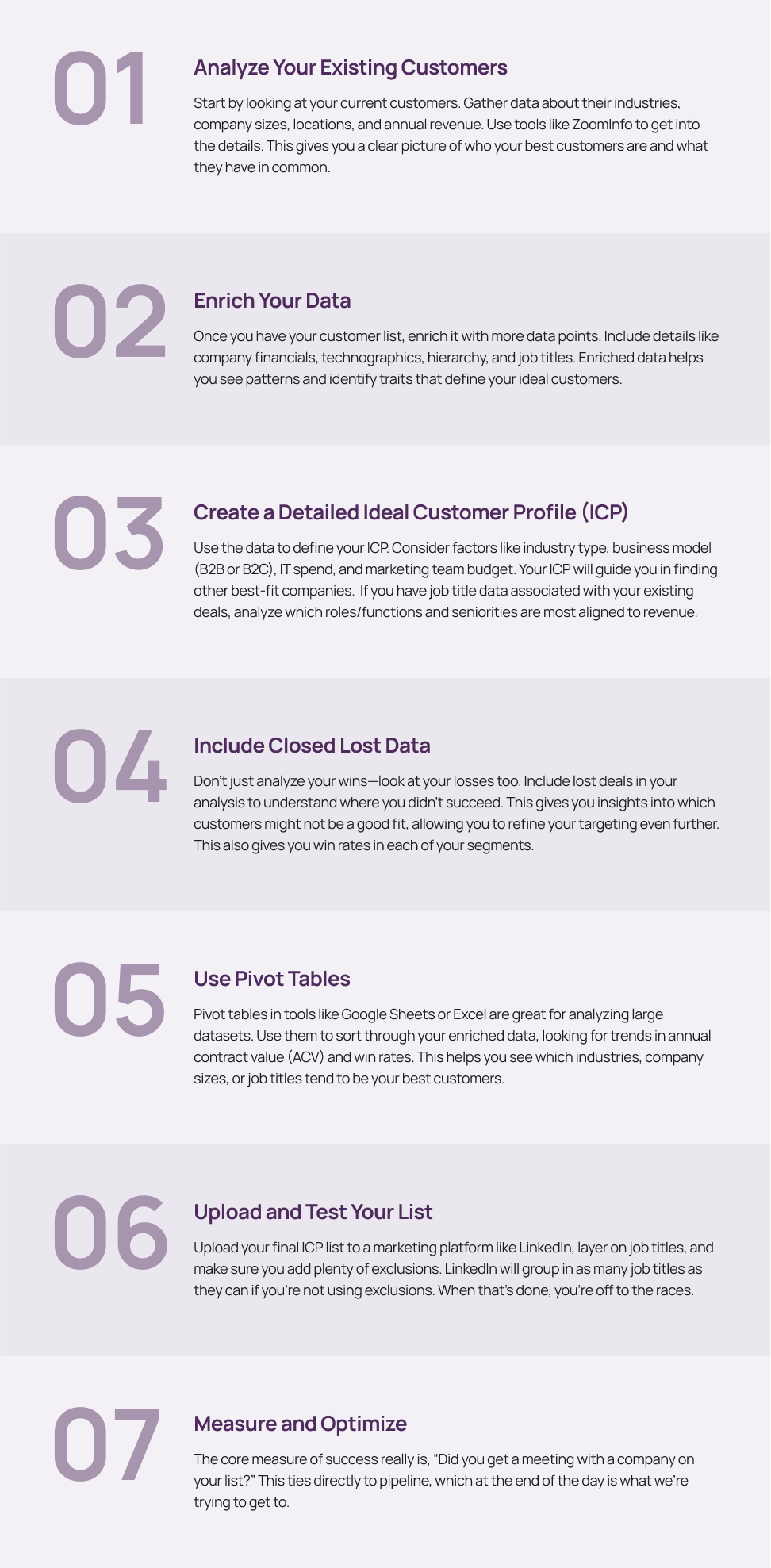Introduction
In B2B marketing, finding and targeting your ideal customer is a never-ending uphill battle. But what if you could focus your efforts only on the companies that are most likely to become your best customers? That’s where Total Addressable Market (TAM) development comes into play.
TAM development is the clearest roadmap to the full market potential of your product. A well-constructed TAM pinpoints specific companies aligned to how your business makes money. Understanding the criteria of your best-fit companies allows you to skip the companies that aren’t good fits, which helps you maximize your marketing efforts, boost conversion rates, and grow revenue.
Whether you’re new to the concept or looking to adjust your approach, everything you need in order to leverage your TAM is right here.
What is Total Addressable Market (TAM) Development?
TAM development is all about finding the full range of potential customers who could benefit from your product or service. In other words, it’s identifying the companies that match your ideal customer persona (ICP) at a company level and could use your product.
The process starts by analyzing your own customer data and identifying what your best customers look like. No more relying on third-party data. Your data has all the ingredients in it already to help you determine the companies with the highest potential for conversion.
TAM development helps you identify and focus on the right businesses and allows you to target with intention.
Why TAM Development is Essential for Business Growth
Instead of trying to reach everyone (boiling the ocean), building and targeting your TAM allows you to focus on a specific group (boiling a pot of water) that fits the criteria of your ICP. This means you’re spending marketing dollars more efficiently, which means you can invest more, which means you can grow more.
Additionally, manually verifying each entry in your TAM ensures that every company you target is a good fit. Segmenting your TAM into the appropriate industry, company size, or use case scenarios brings you into the realm of proper ABM, and allows you to pair assets (customer testimonials, case studies, all the copy, etc.) with each segment.
In essence, TAM development is the backbone of customer generation. By honing in on the right companies and verifying each entry, you’ll drive growth for your business in no time.
Steps to Identify Your Total Addressable Market
Here’s how to build an effective TAM list:

Uploading Your TAM on LinkedIn
LinkedIn is an ideal ABM and audience testing platform because of its targeting capabilities and professional user base. Here’s how to upload and target your TAM on LinkedIn:
1. Prepare Your TAM for Upload
By now, you’ve created a final CSV file that includes all the companies you want to target, along with details like company name, ticker, employee size, LinkedIn Profile, and industry. Use this template to fill in the information about your company list or this template for your contact list. Remember, the more information available, the higher the match rate will be in your targeting. Once your company or contact list is uploaded and matched, you may select and include your list in your targeting setup. Once you complete it, you can upload the list to your Campaign Manager where you can add additional layers of targeting such as job titles, job functions, employee growth rate, member interests, and many more in your campaign shells.
2. Wait 48 hours for LinkedIn’s matching process to complete
LinkedIn allows you to upload your TAM list and match it with LinkedIn’s database of users and companies. Go to the Campaign Manager and select the option to create a new audience. Choose “Upload a List” and follow the prompts to upload your company CSV file. After uploading your list, LinkedIn will automatically try to match your TAM to existing LinkedIn profiles. This will take some time, depending on the size of your list.
Uploading your TAM to LinkedIn is a great way to reach your ICP. This approach helps you maximize your marketing efforts, engage the right prospects, and get qualified leads that turn into revenue.
Wrapping Up:
Understanding and using TAM development can be a game-changer for your B2B marketing strategy.
TAM development isn’t just about exhaustively identifying all potential customers; it’s about understanding your own customer data and finding common characteristics that make up your ideal customer persona (ICP).
Building a solid TAM enables you to create precisely targeted marketing campaigns, leading to higher conversion rates while improving your CAC.
As you implement TAM development at your company, remember: it’s a dynamic process. But if you follow our steps, including manually verifying each entry in your list, you stand to gain enormous benefits.
Our Recommendation:
- Regularly Update Your TAM:
Markets evolve, and so should your TAM. Periodically review and refine your TAM to ensure it remains relevant and aligned with your business goals. - Invest in Data Platforms and Tools:
Use advanced data enrichment tools like ZoomInfo to gather information about your TAM. These tools provide valuable insights that enhance your targeting. - Focus on High-Value Segments:
Identify and prioritize the segments within your TAM that offer the highest potential value. Tailor your marketing efforts to these segments to maximize ROI.
By leveraging TAM development, you’ll drive significant growth and success in your B2B marketing efforts. Embrace the process, stay agile, and watch your marketing strategy deliver better results for the rest of 2024.
-
 Associate Director of Paid Media & Strategy
Andrew Finkenbinder
Associate Director of Paid Media & Strategy
Andrew Finkenbinder
Did you enjoy this article?
Share it with someone!
